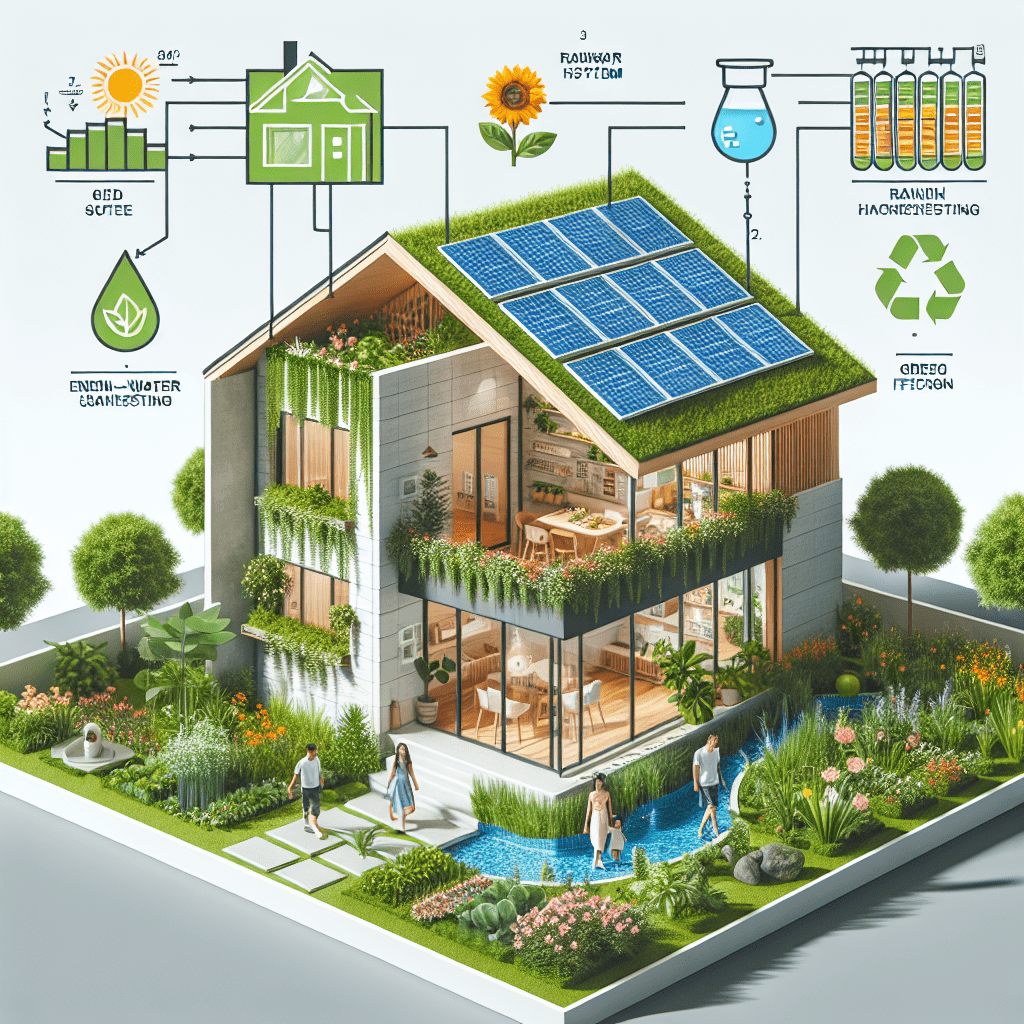Creating a Sustainable Home: Eco-Friendly Design Tips
In today’s world, it is more important than ever to prioritize sustainability in our homes. With climate change becoming a pressing issue, many people are looking for ways to reduce their environmental impact and create a more eco-friendly living space. Fortunately, there are many design tips and tricks that can help you create a sustainable home. In this article, we will explore some of the best eco-friendly design tips for creating a sustainable home.
1. Use sustainable materials
When designing a sustainable home, it is important to prioritize the use of environmentally friendly materials. Look for materials that are renewable, recycled, or locally sourced. Some great options include bamboo, reclaimed wood, cork, and recycled glass. These materials are not only better for the environment, but they also add a unique and natural touch to your home.
2. Opt for energy-efficient appliances
One of the biggest sources of energy consumption in a home comes from appliances. When designing a sustainable home, it is important to choose energy-efficient appliances that will help reduce your energy usage. Look for appliances that are Energy Star certified, which means they meet strict energy efficiency guidelines set by the Environmental Protection Agency.
3. Maximize natural light
Another key design tip for creating a sustainable home is to maximize natural light. By allowing more natural light into your home, you can reduce the need for artificial lighting, which in turn reduces your energy usage. Consider installing large windows, skylights, and light tubes to bring in as much natural light as possible.
4. Install a green roof
Green roofs are an excellent way to add a touch of nature to your sustainable home. Not only do green roofs provide insulation and reduce energy costs, but they also help improve air quality and create habitat for birds and insects. If you have the space, consider installing a green roof on your home to make it more eco-friendly.
5. Use low-VOC paints and finishes
When designing a sustainable home, it is important to choose paints and finishes that are low in volatile organic compounds (VOCs). VOCs are harmful chemicals that can off-gas into your home and contribute to indoor air pollution. Look for paints and finishes that are labeled as low-VOC or zero-VOC to create a healthier living environment.
6. Incorporate water-saving features
Water conservation is another important aspect of sustainable home design. To reduce water usage in your home, consider installing low-flow fixtures, such as faucets, showerheads, and toilets. You can also incorporate rainwater harvesting systems, greywater recycling systems, and drought-tolerant landscaping to further reduce your water usage.
7. Create a backyard garden
One of the best ways to live sustainably is to grow your own food. By creating a backyard garden, you can reduce your carbon footprint by growing your own fruits, vegetables, and herbs. Not only is gardening good for the environment, but it is also a great way to connect with nature and enjoy the outdoors.
Conclusion
Creating a sustainable home is not only good for the environment, but it can also improve your quality of life. By incorporating eco-friendly design tips into your home, you can reduce your environmental impact, save money on energy costs, and create a healthier living environment for you and your family. From using sustainable materials and energy-efficient appliances to maximizing natural light and incorporating water-saving features, there are many ways to create a more sustainable home. By making small changes to your home design, you can make a big difference in the world.
FAQs
Q: What are some other ways to create a sustainable home?
A: In addition to the design tips mentioned in this article, you can also consider installing solar panels, using programmable thermostats, and investing in energy-efficient windows and insulation.
Q: How can I make my existing home more sustainable?
A: If you already have a home but want to make it more sustainable, you can start by making small changes, such as switching to LED light bulbs, using reusable bags and containers, and composting food waste.
Q: Are sustainable homes more expensive to build?
A: While sustainable homes may have a higher upfront cost, they can actually save you money in the long run due to reduced energy costs and maintenance expenses.
TIP: Start small and make incremental changes to create a more sustainable home. Every little bit helps!
#Creating #Sustainable #Home #EcoFriendly #Design #Tips
